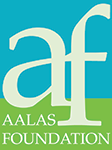What is consumer product safety screening?
Product safety screening is necessary to protect consumers from harm when using commercially available personal care products and household or workplace chemicals.
Product safety screening also provides physicians and veterinarians with important treatment information in the event of accidental poisonings of people or animals.
Why do we screen products for safety?
Consumers expect that the products they use in everyday life are safe when used as directed. Product manufacturers have a moral and legal obligation to screen products and protect consumers from harm.
Years ago, companies were not required to evaluate products for dangerous side effects. This changed in the 1930s after the use of a new mascara product called Lash Lure killed one woman and blinded several others.
Around the same time, a new liquid form of the anitbiotic drug known as sulfanilamide was placed on the market. This new solution was not screened for safety and killed more than 100 men, women, and children. It turns out that, while the drug itself was known to be safe for use, the liquid it was dissolved in was poisonous, containing the same chemical used in antifreeze.
In 1938, Congress passed the Federal Food, Drug and Cosmetic Act, which requires that food, drugs, and cosmetics are screened for safety before being sold to the public.
What safety screening do federal agencies require?
Three different federal government agencies are responsible for ensuring consumer safety: the Food and Drug Administration (FDA), the Consumer Product Safety Commission (CPSC) and the Environmental Protection Agency (EPA).
Federal laws require that humans, animals, and the environment are protected from hazardous products, but specific tests are not mandated to make those determinations.
Before a product can be sold to the public, these agencies require that a comprehensive list of information about the safety and hazards of the product be compiled. The data required cannot be obtained – or considered adequate and complete – without animal screening for product safety.
Advances in technology have drastically reduced the number of animals needed to ensure product safety. Mathematical models, computer simulations, and tissue cultures are often used in preliminary product safety screening.
Scientists, however, need to perform research on live animals to evaluate chemical effects on combined body systems. The Food and Drug Administration has stated that, “many procedures intended to replace animal tests are still in various stages of development and that it would be unwise for us to urge manufacturers not to do any further testing…While the best means may begin with valuable adjunct tests, ultimately testing must progress to a whole, intact, living system – an animal.”
How is safety screening done?
Researchers use a variety of methods, including non-animal systems (cell and tissue cultures, mathematical models, and computer models), laboratory animals, and clinical testing with human volunteers to ensure product safety.
Like pieces of a puzzle, each type of testing is interrelated and may provide important information to help researchers piece together a complete picture of the safety of a new ingredient or product.
Labeling – What does it all mean?
Consumer product labeling is often misleading. Many companies market their products as “cruelty free” despite the fact that most consumer products and their ingredients have been screened for safety with animal models at some point in time. Some ingredients have a proven track record of safety from previous screening in animals and these ingredients don’t have to be screened again.
The “cruelty free” label also does not reveal that companies often hire contractors to screen their product in animals for them. For more information on product labeling and the use of the term “cruelty free,” please visit the FDA website.
If a product is sold and its safety is not known, federal regulation requires specific labeling with the following statement, WARNING: The safety of this product has not been determined.
What is the future of product safety screening?
Researchers will continue to use non-animal models for product safety screening, whenever they are reliable for this purpose. Computer models and cell cultures are commonly used in product safety screening now.
The FDA states on their website, “The FDA supports the development and use of alternatives to whole-animal testing as well as adherence to the most humane methods available within the limits of scientific capability when animals are used for testing the safety of cosmetic products. We will continue to be a strong advocate of methodologies for the refinement, reduction, and replacement of animal tests with alternative methodologies that do not employ the use of animals.”
Researchers will continue to exchange information with consumer product manufacturers in an effort to eliminate duplicative tests on ingredients and compounds already known to be safe.
Federal agencies and the research community have a moral obligation to protect the health and well-being of all of our loved ones, including our pets, and they will continue to explore viable alternatives to animal studies to fulfill that obligation
